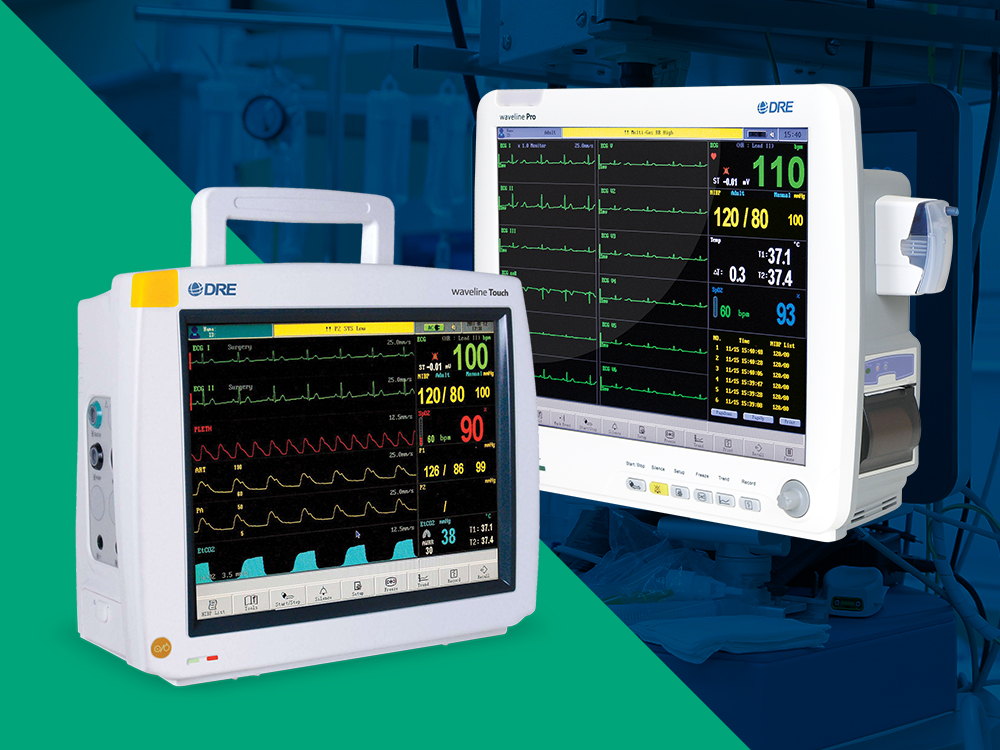Capnography vs. SPO2 – The Difference Could be Life Changing
December 11, 2014

There is a simple reason capnography monitoring is increasingly becoming the standard of care during outpatient surgery procedures: it provides an immediate alarm for life-threatening breathing problems during moderate or deep sedation.
Capnography monitors track end-tidal carbon dioxide (etCO2) with the use of CO2 sampling cannulas. This measured concentration of carbon dioxide in exhaled air creates a capnography waveform to immediately detect changes in oxygen levels that could signal respiratory distress or failure. Pulse oximeters, which had been the standard of care in outpatient surgery, take much longer to register respiratory distress. This is because oxygen levels in blood can remain normal for several minutes after a patient stops breathing.
Demonstrating The Difference – 1 to 2 Minutes Really Matter
South Island Periodontics & Implantology, PLLC, in Cedarhurst, New York, has incorporated capnography monitoring into its practice to ensure patient safety. Dr. Daniel Gober recorded this video demonstration to show the dramatic difference between capnography and pulse oximetry:
Capnography vs. Pulse Oximetry from SIPI on Vimeo.
At a 2014 presentation to the American Association of Dental Boards, Dr. Michael Ellis, DDS, chair of the American Association of Oral and Maxillofacial Surgeons Committee on Anesthesia, posed some philosophical questions when comparing capnography use to being able to see 60 seconds into the future.
“Ever said anything you would like to retract? Ever made an error you wish you hadn’t?” read one of the slides in the presentation. “In the interest of patient safety, would you like an opportunity to see into the future?”
All surgeries carry risk. Sedatives, including those used in conscious sedation, may depress breathing or cause apnea when combined with other drugs. EtCO2 monitors provide an additional safety net for patients undergoing both conscious sedation or deep sedation.
A review of the American Society of Anesthesiologists closed insurance claims found that anesthetic mishaps in outpatient surgery sites can be severe or even fatal. Inadequate oxygenation/ventilation was the most common type of incident. Many of these incidents could have been prevented with better monitoring, the ASA found.
In light of these findings, the ASA changed its standards of care and practice in 2011 to require etCO2 monitoring for moderate and deep sedation. The ASA is one of the most influential organizations in the healthcare field, and dozens of medical organizations across the United States have copied these changes or are considering doing so.
Capnography is now the expectation for moderate to heavy sedation.
The benefits of capnography are being recognized by professional organizations in a wide range of fields, including:
- American Association of Oral and Maxillofacial Surgeons: AAOMS Office Anesthesia Evaluations began requiring capnography in 2014 for moderate sedation, deep sedation and general anesthesia.
- Institute for Safe Medication Practices: The ISMP recommends patient-controlled analgesia procedures follow the Anesthesia Patient Safety Foundation’s guidelines on using capnography to detect unrecognized hypoventilation and carbon dioxide retention.
- American Heart Association: In 2010, the AHA began recommending the use of capnography to verify endotracheal tube placement in during triage for patients with acute coronary syndromes.
- Society of Interventional Radiology: In response to the American Society of Anesthesiologists capnography standards, the SIR recommends that interventional radiologists familiarize themselves with how capnography works and its benefits over pulse oximetry.
- Anesthesia Patient Safety Foundation: The APSF Winter 2012 Newsletter includes a four-part case study on capnography monitoring reform at St. Joseph’s/Candler Health System in Savanna, Ga.
- American Association for Accreditation of Ambulatory Surgery Facilities: The ASAASF updated its 2014 standards to include mandatory, continual end-tidal carbon dioxide monitoring to confirm correct endotracheal tube placement.
- Journal of Emergency Medical Services: A 2014 article touts the importance of prehospital airway management through the use of capnography and other monitoring techniques.
- Canadian Anesthesiologists’ Society: The CAS 2012 Guidelines were expanded to require capnography monitoring during conscious sedation and when patient airways have not been instrumented.
- Oregon Board of Dentistry: Oregon state laws were updated in 2014 to include capnography monitoring for patients under moderate sedation, deep sedation and general anesthesia. To receive permits in the above listed kinds of sedation, practices must have both capnography and pulse oximetry on site available for immediate use.
More professions are sure to follow as evidence mounts that capnography can make a real difference in saving lives.
Click to learn more about DRE’s selection of capnography monitors.